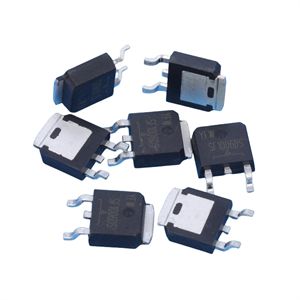Date:2024-09-25 Categories:Product knowledge Hits:458 From: Guangdong Youfeng Microelectronics Co., Ltd(YFW)
Schottky diode is a two terminal device used as a unidirectional switch. Schottky is a metal semiconductor diode known for its extremely low forward voltage, where the metal forms the anode and the n-type semiconductor acts as the cathode. Today we will teach you how to detect Schottky diodes:
1. Distinguish between positive and negative electrodes: Observe the symbol markings on the casing. Usually, the Schottky diode symbol is marked on the outer shell of the Schottky diode, with one end marked with a triangular arrow as the positive pole and the other end as the negative pole. Detect the highest reverse breakdown voltage. For AC power, due to constant changes, the highest reverse operating voltage is the peak AC voltage that the Schottky diode can withstand.
2. Detect bidirectional Schottky diodes: Place the multimeter in the corresponding DC voltage range. The test voltage is provided by a megohmmeter. During testing, shake the megohmmeter and measure the VBR value using the same method. Finally, comparing VBO and VBR, the smaller the absolute difference between the two, the better the symmetry of the tested bidirectional triggered Schottky diode.
3. Detection of high-frequency variable resistance Schottky diodes: Identify the positive and negative poles. The difference in appearance between high-frequency variable resistance Schottky diodes and ordinary diodes is their color code. The color code of ordinary diodes is generally black, while the color code of high-frequency variable resistance Schottky diodes is light. Its polarity pattern is similar to that of a regular diode, where the end with a green ring is the negative electrode and the end without a green ring is the positive electrode.
4. Detection of variable capacitance Schottky diode: How to swap the red and black probes of the multimeter for measurement? The resistance value between the two pins of the variable capacitance Schottky diode should be infinite. If a slight swing of the multimeter pointer to the right or zero resistance is found during measurement, it indicates that the measured variable capacitance Schottky diode has a leakage fault or has been broken down.

Previous: Classification, Structure, and Principle of MOSFET
Next: The application of silicon carbide Schottky diodes in PFC circuits?